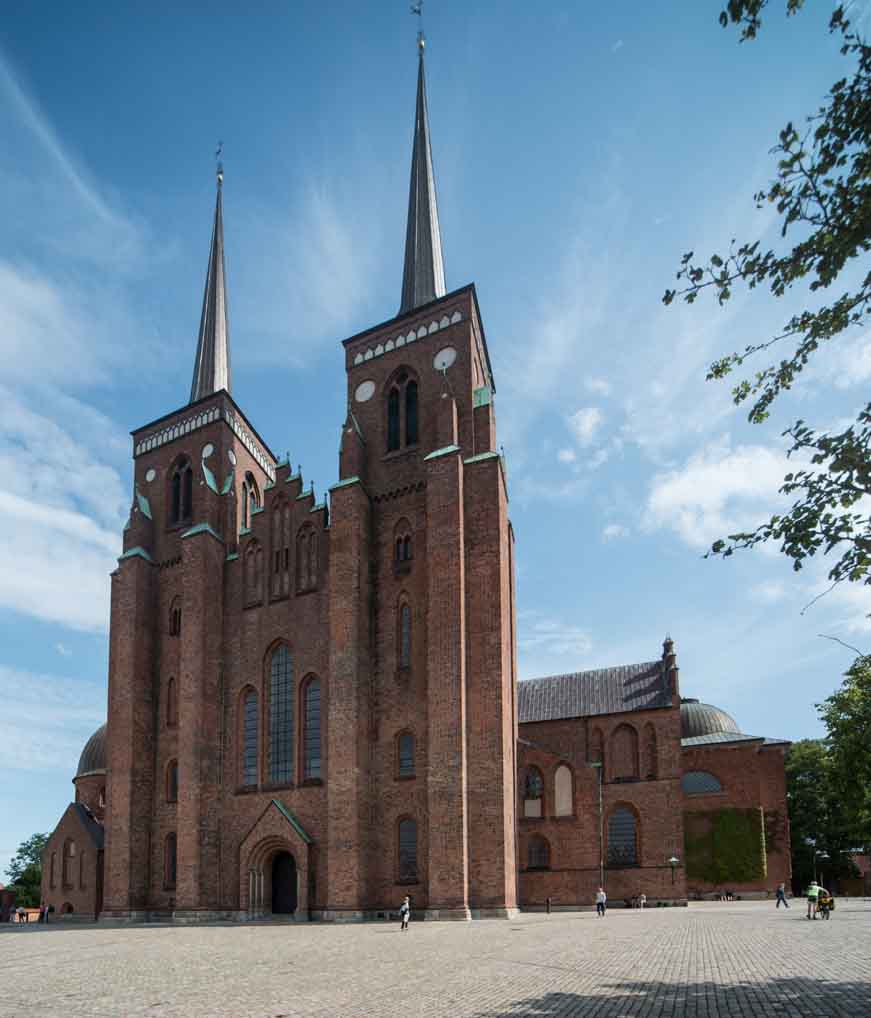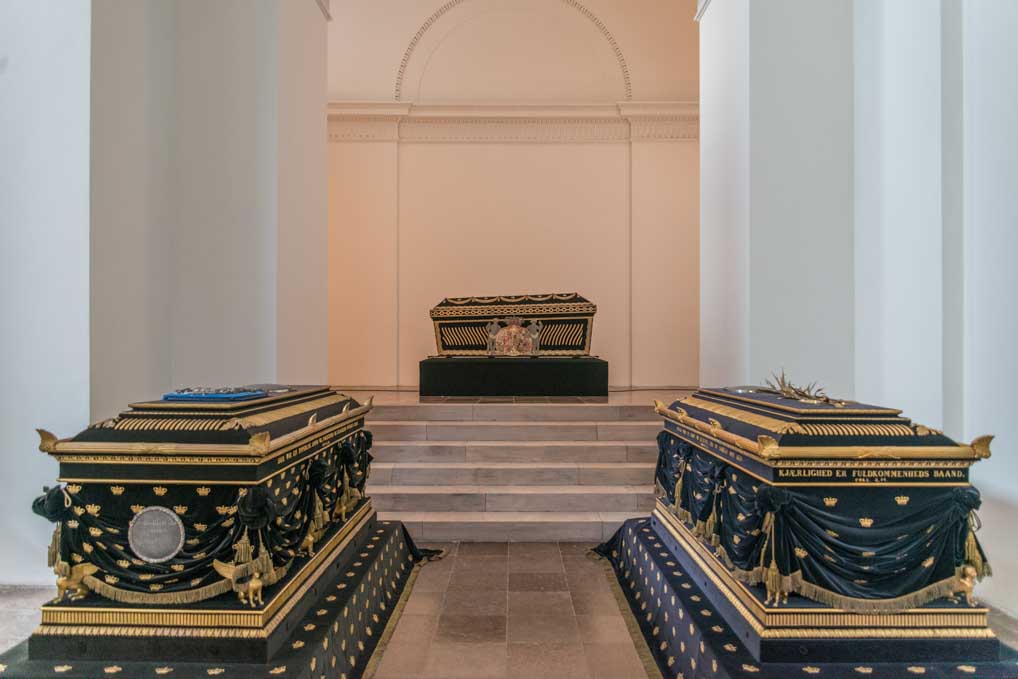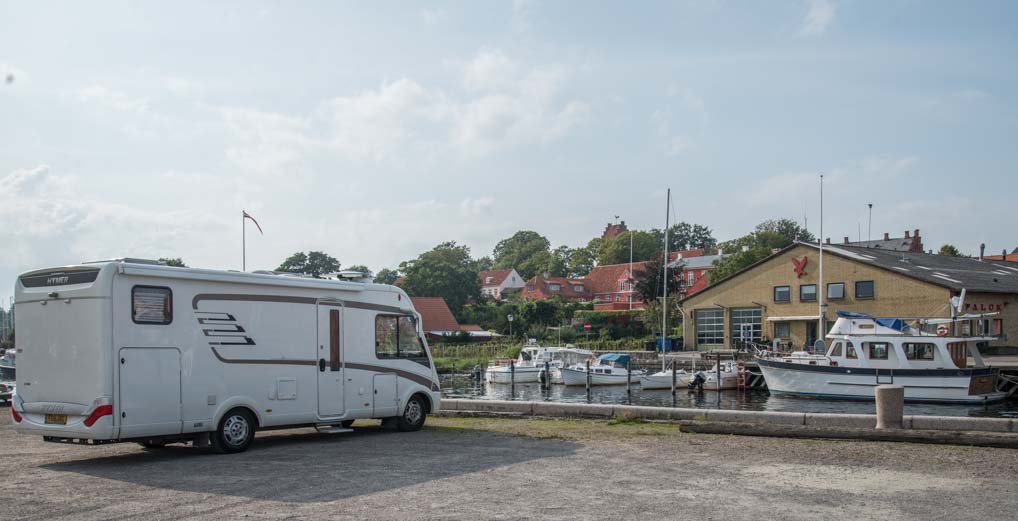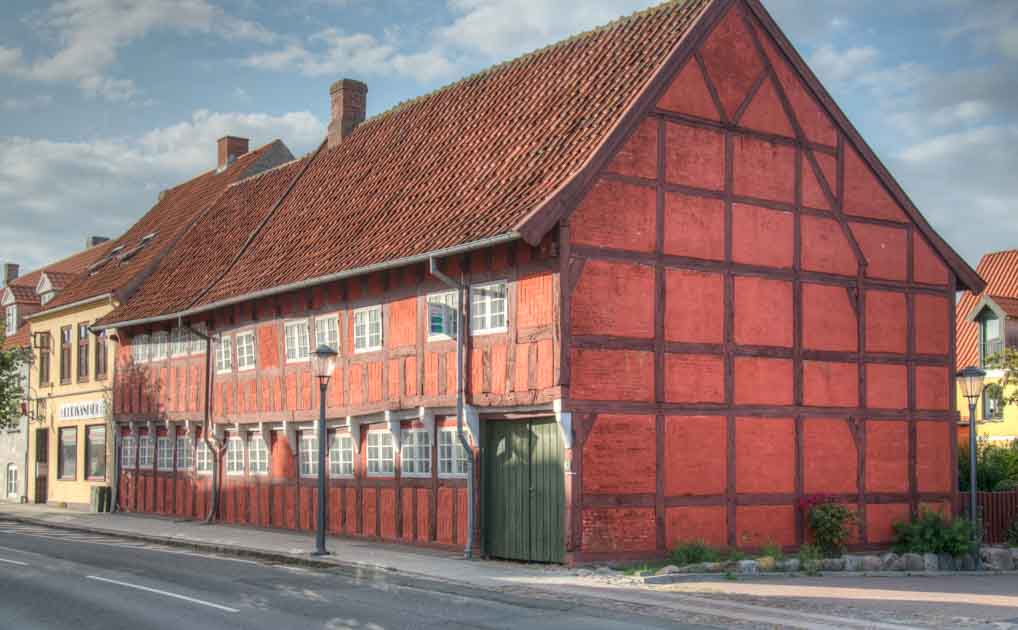Last night’s wildcamping spot turned out to be ideal. Right next to a long soft sandy beach and far enough away from any roads to be peaceful. The dogs had a great time running free on the beach and in Mabel’s case in the sea and it was all free!
The journey to our main stop for the day, Roskilde, was only forty miles, but now we are back in Northern Europe our old friend traffic has reappeared, and I for one am not glad to see him. Traffic jams and general weight of traffic has been with us all day.
On a good note we have seen an interesting accident reduction scheme in operation. On several of the single lane main roads we have used today the road builders have put rumble strips not only on the side of the roads, but also on either side of the white line down the road centre. This of course means you get a loud warning just before you cross the white line. This seems a cheap and practical measure to reduce people accidentally crossing the centre of the road either through falling asleep or through lack of concentration.
Another small matter has kept certain members of Team Basil, possessed of a schoolboy sense of humour (mainly me), amused today , and yesterday for that matter. It is the Danish word for speed which is “fart”!! So all the electronic signs indicating your speed bear the words “Din Fart”. Nobody else? That’s just me then.

Roskilde Cathedral
Roskilde is, for tourists, mainly known for two things: it’s Viking Ship Museum and its UNESCO World Heritage Cathedral. Having done Viking ships on this trip already it was the Cathedral for us. The site of the Cathedral has been used for over 1000 years and it is thought that Harald Bluetooth was the first to erect a wooden church.

Roskilde Cathedral
As a slight aside the inventor of the modern technology appropriated the name Bluetooth from the Danish King and if you look at the pre-latin Scandinavian runic letters for H and B and lay them on top of each other you get the Bluetooth symbol! Don’t say you don’t learn anything from these posts!

Roskilde Cathedral
The modern Cathedral is one of the earliest examples of a Brick Gothic cathedral and it is one of the largest and most impressive brick structures I have ever seen. It was started by that warrior Bishop Absalon I mentioned yesterday, in the thirteenth century and has been added to and extended over the years.

Cathedral Frescoes
Much of the architecture is recognisable from the more familiar stone Cathedrals in France and elsewhere but there is something awe inspiring about the fact that it is all constructed in brick.

Roskilde Cathedral – Altarpiece
The inside is relatively plain, in the Lutheran style, but various side chapels and the area behind the altar are home to tombs of about 35 Danish Kings and Queens. There is an exhibition of questionable taste about the design of the tomb for the current Danish Queen Margaret. You may have seen in the news recently that her, far grumpier than Prince Phillip, husband Henrik, has stormed off saying, when the grim reaper arrives, he will not be interred next to his wife. The exhibition reveals how embarrassing this will be, because the Queen has commissioned a modern sculptor to construct a translucent tomb, in which you will be able to see the outlines of the bodies of Margaret and Henrik, or perhaps just Margaret on her own!!

Gloomy tombs of some Kings and/or Queens of Denmark
In general Roskilde Cathedral is one of the most impressive buildings we have seen on this trip and it is well worth the 60 DK (€8) admission fee.
We had a wander about the centre of Roskilde, which has a nice central square with some further Brick Gothic architecture. We even sat down at a cafe for lunch, but when we saw they wanted 125 DK (€16.80) for a Tuna Sandwich, we beat a hasty retreat to lunch, from Basil’s bare cupboards, of bread and water.

Roskilde town square
The countryside on Zeeland, which is the island on which Copenhagen and Roskilde sit, is a typical North European landscape: flat or gently rolling hills and large fields of cereals. The one distinctive feature are the small Brick Gothic church towers that poke up from villages, every now and again, breaking up the skyline.

Basil’s bedtime spot in Skaelskor
For our overnight stop we have found a marina in the little town of Skaelskor (55.253006, 11.289891). It is 120 DK (€16) per night including excellent wifi, with toilets and electricity extra. It’s a quiet, pretty small town with a few nice old buildings and I can just see the top of a Brick Gothic church tower through Basil’s window.

Skaelskor – view from Basil’s window
Denmark is the last part of our concrete plan for this year. We had thought about carrying on to the Netherlands but we don’t have a guidebook, so we will leave that for another year. We have guidebooks for Germany, France and of course what used to be referred to as Eastern Europe. So our current plan is to head down through North East Germany to Prague and then swing through Southern Germany for some early autumn warmth.

Skaelskor
